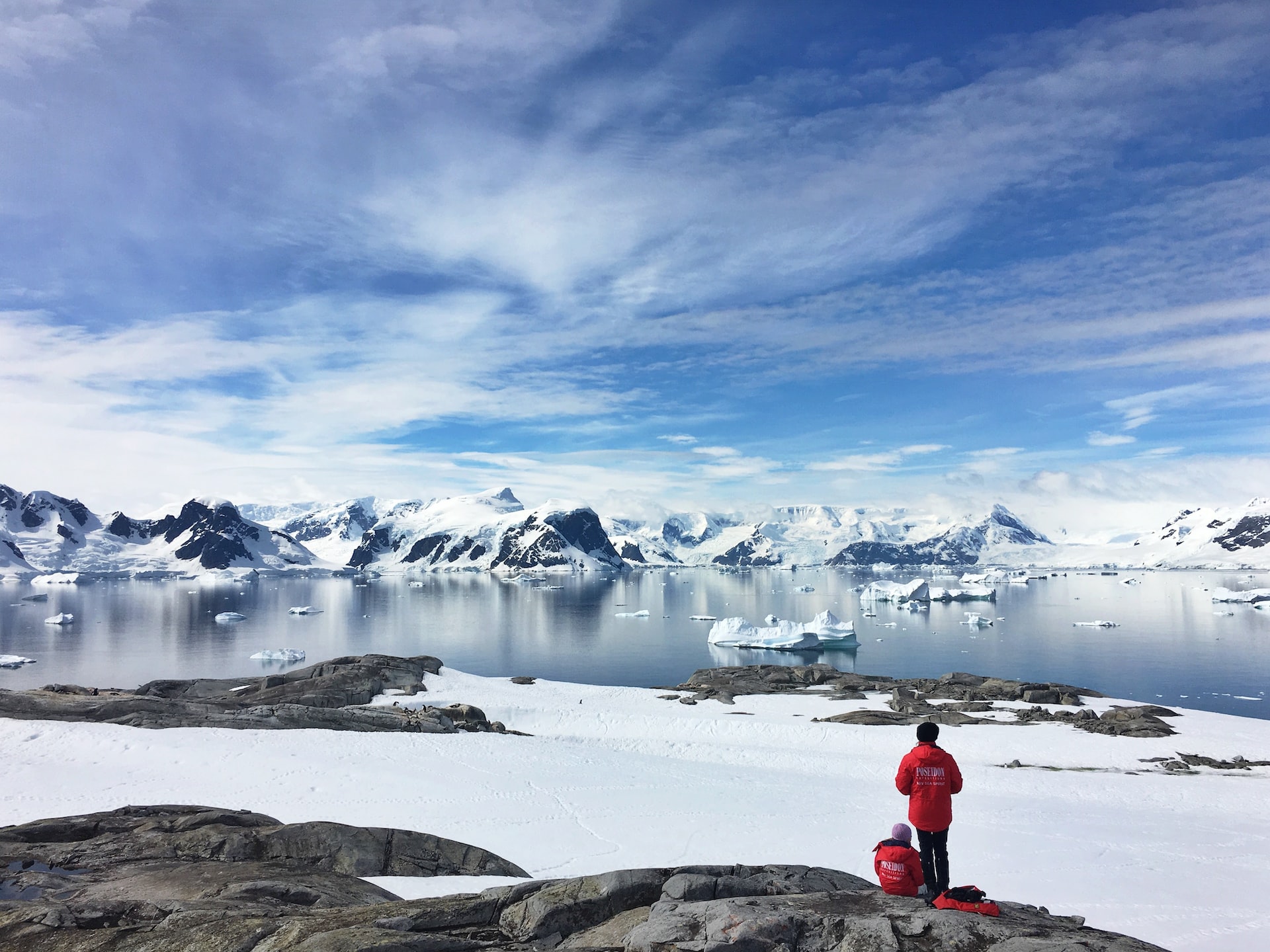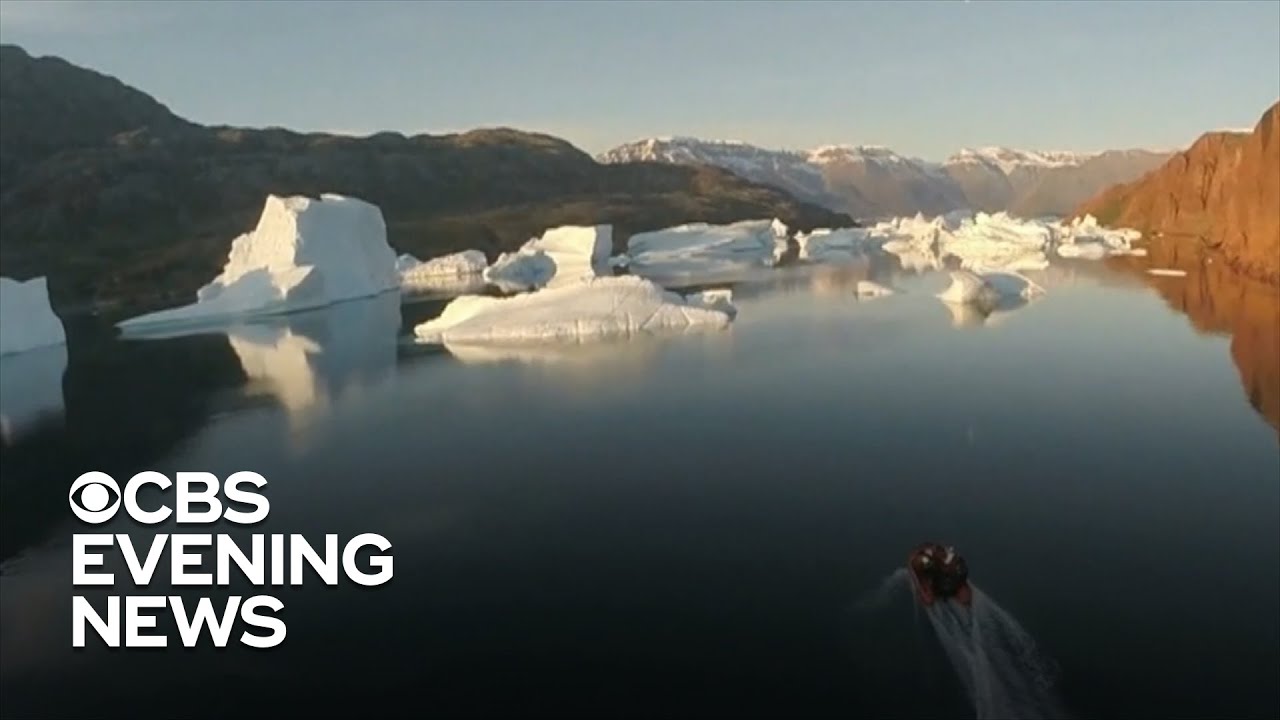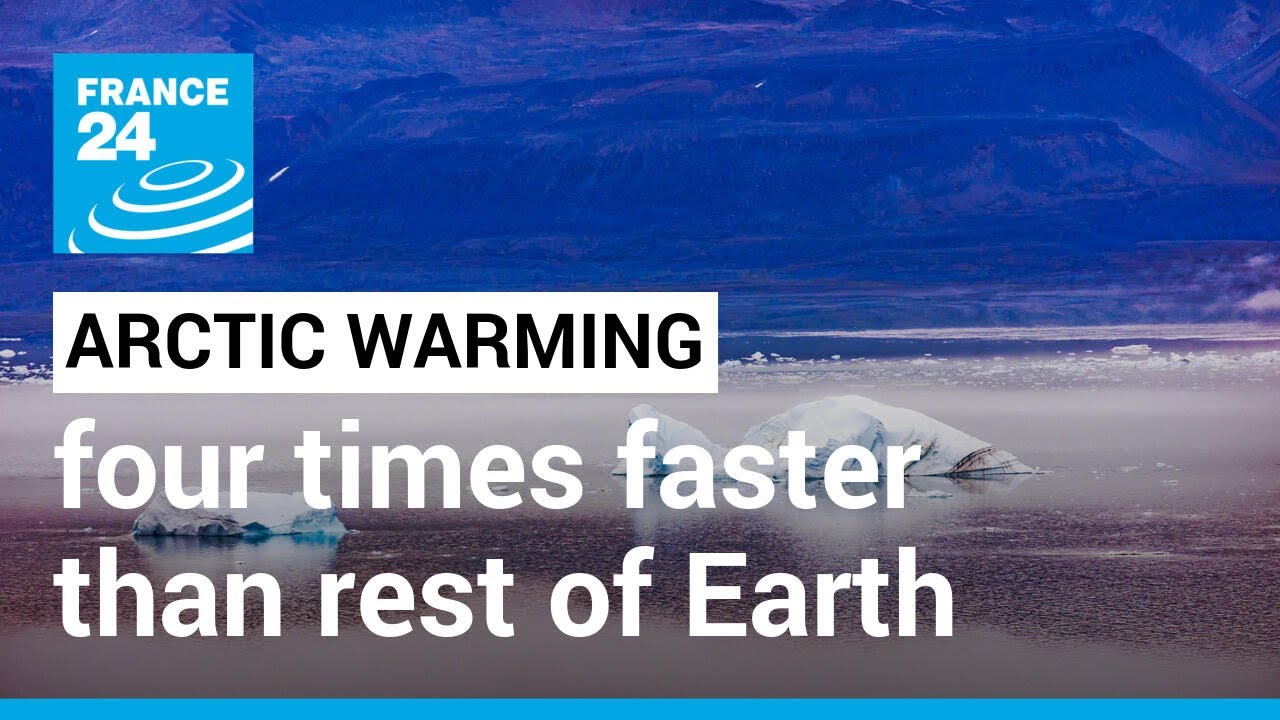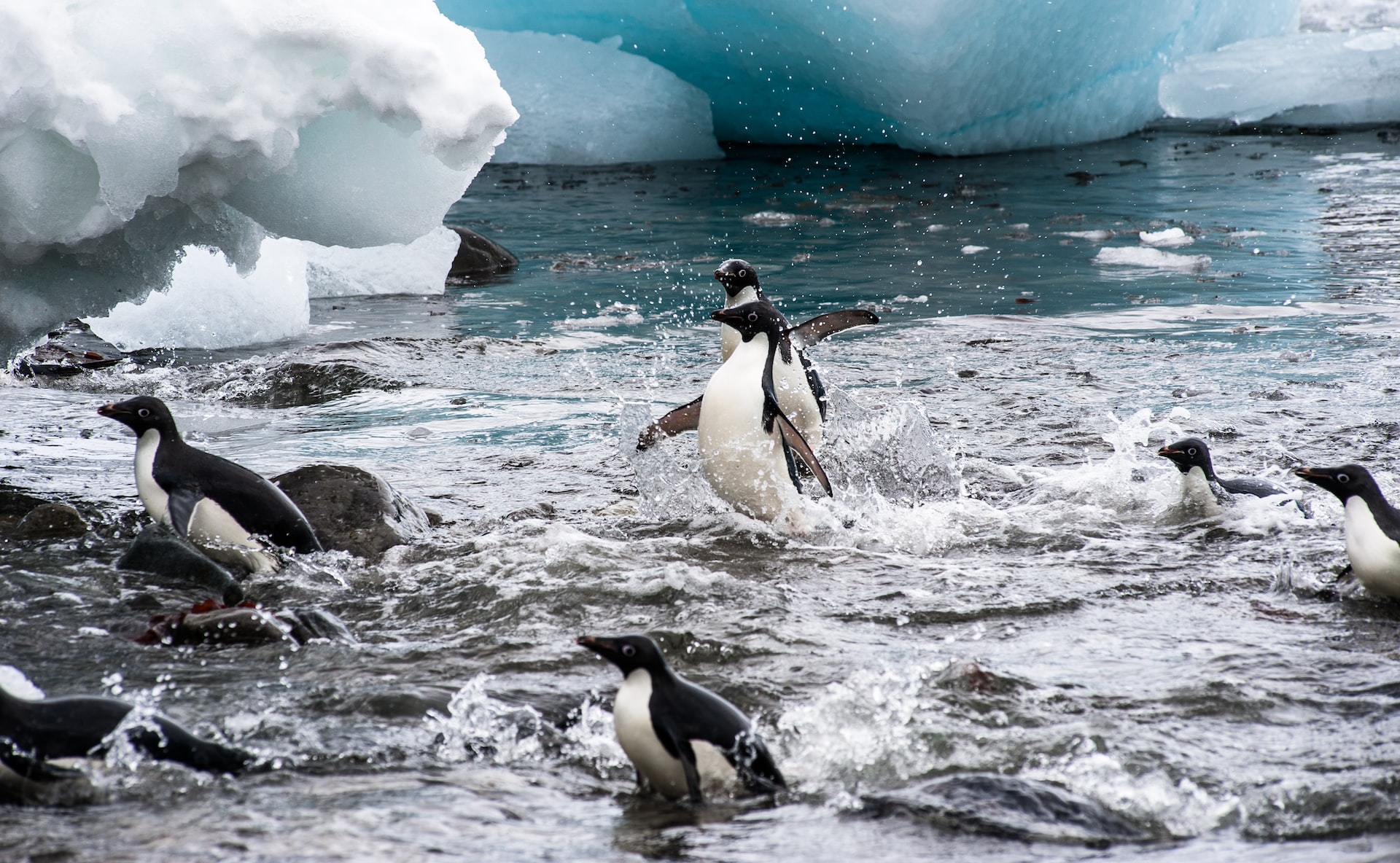Arctic Warming – What Is It? And Why Is It Happening At Higher Rate?
Arctic warming is roughly four times faster than the rest of the planet. Recent research finds that Arctic warming is roughly four times faster than the rest of the planet.
Author:Rhyley CarneyReviewer:Paula M. GrahamAug 12, 2022142 Shares2.1K Views

Recent research finds that Arctic warmingis roughly four times faster than the rest of the planet. The results are a reminder that the people, plants, and animals that live in polar areas are suffering from fast and catastrophic climate change.
Scientists previously predicted that the Arctic is warming about twice as quickly as the rest of the planet. Recent warming is significantly underestimated, according to new research. During the last 43 years, the area has warmed 3,800 times faster than the rest of the world.
What Is The Arctic?
The Arctic is the earth's natural northernmost area. The Arctic Ocean basin dominates it, with parts claimed by the Russian Federation, the United States, Canada, and the five Nordic nations (Denmark, Finland, Iceland, Norway, and Sweden).
It is a region of contrasts that captivates the imagination: difficult to access, unfriendly, but beautifully beautiful, delicate, yet harsh.
The Arctic area is home to around four million people, with Indigenous Peoples constituting a minority population. These are the Inuit of Canada, Alaska (US), and Greenland; the Yu'pik, Iupiat, and Athabascan of Alaska; and the Sami of Norway, Sweden, Finland, and the Russian Federation.
Despite being ethnically different and geographically distant, they hunt the same species, form cooperative societies, and have adapted to "a tough, but plentiful, environment".
The Arctic Is Warming Up
According to studies by a group of climate experts, the Arctic may be warming up to four times faster than other parts of the world. Recent research suggests that summer sea ice could disappear entirely as soon as 2035.
The amount of Arctic sea ice is shrinking year by year, with 75% of the ice volume melting in the past 15 years alone. The ice that remains is thinner and of lower quality. Rain fell on Greenland's peak for the first time since records started, a "reliably frozen zone" two miles above sea level.
Scientists have recorded orca cries in parts of the Arctic that were formerly covered by sea ice, jeopardizing creatures' survival at all levels of the food chain. In 2020, 21,000 tonnes of diesel leaked from a storage tank at Norilsk Nickel's Siberian power facility, damaging rivers, and lakes.
According to investigators, the tank sank owing to melting permafrost caused by global warming, which compromised the tank's supports. Consequently, the disaster was caused by and driven by environmental harm in the Arctic.
Melting permafrost releases not just carbon dioxide but also methane and black carbon—short-lived climatic pollutants that, although staying in the atmosphere for shorter periods, are 25 times more potent and strong in terms of contributing to global warming than carbon dioxide.
Up to a quarter of Arctic warming is caused by black carbon, which is black soot that, when released, sticks to snow and ice and makes it melt faster.
The Arctic Ocean will certainly witness more commercial shipping and tourist excursions with less sea ice. As new commercial shipping routes over the Arctic decrease the distance between Europe and Asia, large commercial ships are increasingly visiting formerly inaccessible regions, harming animals and dumping waste.
The Arctic is also rich in material resources, such as massive oil and gas reserves. The US Geological Survey estimates that the Arctic has around one-quarter of the world's oil and gas stocks. Oil, gas, and other valuable minerals become accessible when the ice melts. This brings private companies to the area.

The Arctic is warming faster than anywhere else, scientists say
Why Is The Arctic Warming Faster?
The worldwide average temperature climbed by roughly 0.2°C every decade over the previous four decades, whereas, in the Arctic, the average rise per decade was about 0.75°C.
When comparing the two trends, Arctic temperatures grew four times faster than the world average, with some locations climbing seven times faster.
Arctic warming, also known as Arctic amplification, is occurring. However, their pace is significantly more disastrous than scientists initially realized. The Arctic has not warmed at a regular, predictable rate during the previous several decades.
Researchers anticipate that by late 2021, the Arctic will be warming four times faster than the rest of the planet. On the other hand, scientists have a decent idea of what's driving the general Arctic warming.
Sea ice has a high "albedo," reflecting much of the sun's light, while the ocean absorbs less. As the ice melts, the Arctic's albedo declines, increasing temperatures and melting even more ice.
Warmer summers and autumns set the stage for the coldest months to heat up, then dump all that additional heat into the Arctic Ocean. The ramifications are already vast and far-reaching. Warming temperatures are forcing permafrost, or frozen earth, to melt, causing infrastructure to collapse.
High temperatures also green the terrain, trapping snow against the ground and warming it more. The Arctic is slipping into a state of climatological and biological uncertainty. The additional vegetation is darker, absorbing more of the sun's rays.
Because of this diversity, models struggle to predict how the Arctic is evolving. One important source of worry is the possibility of the climate system reaching a tipping point.

Arctic warming four times faster than rest of Earth, much higher than projections • FRANCE 24
Why Were Scientists Unable To Realize Arctic Warming Rate?
Compared to the rest of the planet, the Arctic is heating up at a lightning pace. Furthermore, recent research indicates that the area is warming quicker than experts assumed.
Researchers reported in Communications Earth & Environment on August 11 that the average Arctic temperature has climbed roughly four times faster than the world average over the previous four decades.
And it is just on average. Some regions of the Arctic Ocean, such as the Barents Sea between Russia and Norway's Svalbard island, are warming up to seven times faster than others, according to Finnish Meteorological Institute in Helsinki meteorologist Mika Rantanen and colleagues.
Previous research has shown that the Arctic's average temperature rises two to three times faster than the rest of the world as people continue altering the climate.
The researchers examined observational data from 1979 to 2021 to assess the actual rate of increased warming, a phenomenon known as Arctic amplification. The average global temperature rise over that period was roughly 0.2°C every decade. However, the Arctic is rising at a rate of 0.75°C every decade.
According to Rantanen and colleagues, even the finest climate models are not excellently mimicking that warming. The fact that the models can't accurately show how the Arctic has changed in the past makes me wonder how well they can predict how the region will change.
It's unclear what the issue is. One problem might be that the models have difficulty accurately replicating Arctic temperatures' sensitivity to sea ice melting.
One major factor of Arctic warming is the disappearance of snow and ice, especially sea ice. The dazzling white snow and ice form a shield reflecting incoming solar energy into space. However, heat is absorbed by open ocean waters or exposed rocks, elevating the temperature.

NASA Sees High Temperatures, Wildfires, Sea Ice Minimum Extent in Warming Arctic
The Arctic As A Leading Indicator For Climate Change On Earth
While what occurs in the rest of the globe impacts the Arctic, the opposite is true. "The Arctic is a bellwether," former United Nations Secretary-General Ban Ki-moon said. What is occurring in the Arctic impacts the rest of the planet and should serve as a wake-up call.
More extreme temperature fluctuations, such as hotter summers in the United States and Canada; warming of the Mediterranean Sea and East Asia; and colder winters and more snow in mid-latitudes across North America, Europe, and East Asia, can be linked directly to diminishing summer Arctic sea ice, which alters atmospheric circulation patterns. Economic growth and environmental protection must go hand in hand to keep the Arctic alive.
Greenpeace proposed an Arctic refuge during the 2012 United Nations Conference on Sustainable Development in Rio de Janeiro, Brazil. Greenpeace advocated for a protected region encompassing the middle Arctic Ocean beyond the 200-nautical-mile boundary of Arctic coastal governments' exclusive economic zones, which would be off-limits to extractive and harmful activities.
Military activities, fishing, prospecting, and mining of hydrocarbons or other minerals from the seabed, would be outlawed. Shipping in the region would be subject to stringent environmental rules, including a ban on the use of heavy fuel oil.
Because the proposed sanctuary would be "outside state authority," the Arctic Council and other international community members would need to collaborate to make it a reality.
People Also Ask
What Is Arctic Warming?
The Arctic is warming three times faster than the rest of the world. This is primarily because melting snow and ice reveals a darker surface, increasing the quantity of solar energy absorbed in these locations (albedo effect).
Is The Arctic Getting Hotter?
The Arctic has been warming two to three times faster than the rest of the world and is considered sensitive to climate change; warm Atlantic air is flowing north off the coast of Greenland.
How Will Arctic Warming Affect The World?
The world will continue to experience the impacts of a warming Arctic unless immediate action is taken to reduce greenhouse gas emissions.
Rising sea levels, shifting temperature and precipitation patterns, and more severe weather events will result in locations all over the planet, even thousands of kilometers south of the Arctic.
What Happens If The Arctic Melts?
If all of the ice in Antarctica, Greenland, and mountain glaciers throughout the globe melted, the sea level would rise by around 70 meters.
The ocean would engulf all coastal cities. And the land area would be significantly reduced. However, many cities, such as Denver, would be able to endure.
What Animals Are Affected By The Warming Arctic?
The Arctic fox, polar bear, Pacific walrus, four ice seals (ringed, bearded, harp, and ribbon seals), four whales (gray, beluga, bowhead, and narwhal), a sea butterfly, three seabirds (Kittlitz's murrelet, spectacled eider, and ivory gull), and two terrestrial mammals (caribou/reindeer and muskox) are all affected by Many species are experiencing population decreases. For others, extinction may be imminent.
Conclusion
The melting of Arctic sea ice and the predicament of Arctic species and Indigenous culture should act as a wake-up call. Changes in sea ice, snow cover, and glaciers in the polar areas also provide information on what is occurring in the climate.
It is not too late to reverse the trend and halt the melting, but the window of opportunity may shut if nothing is done.
Although environmental harm is unavoidable, it may be mitigated by restricting or outright prohibiting certain activities.
This, however, can only be accomplished via collaboration among Arctic governments and the greater international community. No one nation can achieve it on its own.

Rhyley Carney
Author

Paula M. Graham
Reviewer
Latest Articles
Popular Articles
